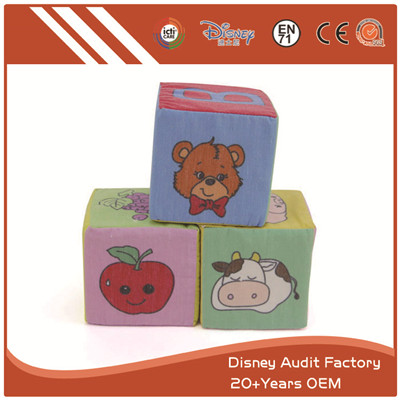The history of toys in China (part four)
17. Since the Ming Dynasty, the development of toys has mainly been the rise of the toy industry in the true sense of the word. Specialized toy workshops and sales shops have appeared. From the perspective of economics, industrialized running with clear production and sales appeared in the toy market of the Ming Dynasty. And toys handed down from the Ming Dynasty are mostly ceramics, the rest of the toys were made of traditional materials (clay, bamboo, wax, food raw materials, etc.). It is worth mentioning that "Dao Ye Qi" mentioned in The Brief Guide to Tourist Spots in the Imperial Capital City by Liu Tong in the late Ming Dynasty, is made of glass, shaped into a thin-necked bottle with a very thin bottom. Blowing in the air causes the bottom tremor to make a sound, so it is also called "musical gourd".
18. The toy products of the Qing Dynasty both inherited the tradition and were influenced by the Western countries at that time. On the one hand, the industrial production, technical variety, and style art all show the appearance of the past, such as clay dolls, puppets, bamboo and wood toys. In terms of subject matter, they were mainly related to folk activities and greatly expanded in form. On the other hand, toys were influenced by Western countries, like diorama, which was a new type of toy and quite famous at the time. After the Opium War, as the gate of China was gradually opened, more Western toys were introduced into China, such as music boxes, dolls, and Froebel gifts. As a result, the evolution of Chinese toys has been influenced by foreign cultures on the basis of the original tradition.
19. After the May 4th Movement in 1919, China's national industry first appeared. There were a number of toy manufacturers around Shanghai, like the Patriotic Toy Factory, which produced beautiful clocks, tin-plated toy ships and toy trams while producing tin boxes, plates and other items. Those factories improved the quality of Chinese toys by imitating and improving foreign products.
20. The most important development stage of China's toy manufacturing industry was from the 1920s to the 1930s. At that time, there was a tinplate manufacturing industry around Shanghai that produced tinplate boxes for containing paints, cosmetics, biscuits and candy. Due to the influence of the West in Shanghai, manufacturing tin-plated toys became popular and emerging. During the Japanese invasion of China in the 1930s, war-related toys, such as fighters, tanks, and soldiers, became the main products. Later, toys were often used as propaganda tools, especially during the Cultural Revolution. Chinese toy styles showed significant changes before and after the founding of the People's Republic of China in 1949. Toys have more oriental styles in patterns and shapes.
In the subsequent development, Chinese and Western toys have gradually merged and developed. The rapid development of science and technology has brought us more forms of entertainment today, and the types, forms and concepts of toys are constantly changing. Mechanical, and high-tech technologies are reflected in toys. Toys have not only played an important role in the most basic pastime and entertainment, but also in the development to humanistic care, like psychological regulation, and coordination.

18. The toy products of the Qing Dynasty both inherited the tradition and were influenced by the Western countries at that time. On the one hand, the industrial production, technical variety, and style art all show the appearance of the past, such as clay dolls, puppets, bamboo and wood toys. In terms of subject matter, they were mainly related to folk activities and greatly expanded in form. On the other hand, toys were influenced by Western countries, like diorama, which was a new type of toy and quite famous at the time. After the Opium War, as the gate of China was gradually opened, more Western toys were introduced into China, such as music boxes, dolls, and Froebel gifts. As a result, the evolution of Chinese toys has been influenced by foreign cultures on the basis of the original tradition.
19. After the May 4th Movement in 1919, China's national industry first appeared. There were a number of toy manufacturers around Shanghai, like the Patriotic Toy Factory, which produced beautiful clocks, tin-plated toy ships and toy trams while producing tin boxes, plates and other items. Those factories improved the quality of Chinese toys by imitating and improving foreign products.
20. The most important development stage of China's toy manufacturing industry was from the 1920s to the 1930s. At that time, there was a tinplate manufacturing industry around Shanghai that produced tinplate boxes for containing paints, cosmetics, biscuits and candy. Due to the influence of the West in Shanghai, manufacturing tin-plated toys became popular and emerging. During the Japanese invasion of China in the 1930s, war-related toys, such as fighters, tanks, and soldiers, became the main products. Later, toys were often used as propaganda tools, especially during the Cultural Revolution. Chinese toy styles showed significant changes before and after the founding of the People's Republic of China in 1949. Toys have more oriental styles in patterns and shapes.
In the subsequent development, Chinese and Western toys have gradually merged and developed. The rapid development of science and technology has brought us more forms of entertainment today, and the types, forms and concepts of toys are constantly changing. Mechanical, and high-tech technologies are reflected in toys. Toys have not only played an important role in the most basic pastime and entertainment, but also in the development to humanistic care, like psychological regulation, and coordination.
